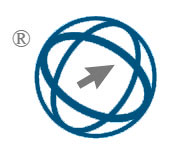Intelligent Detection of Towers and Lines in Passageways Using Hybrid Evolutionary Computational Intelligence (HECI) Algorithms
Abstract
Identification of towers and lines in passageways is important in infrastructure surveillance, assessment, and the formation of automated surveillance systems. Indeed, conventional AI-based solutions for identification tasks are not immune to certain types of indeterminacy that arise in complicated contexts and can, therefore, yield unpredictable results. This paper presents a new method that integrates AI detection methods with the Hybrid Evolutionary Computational Intelligence (HECI) model to solve these uncertainties and increase decision-making efficacy. The computational framework is built using inspection data from real infrastructure evaluations and simulated scenes with different lighting and hidden objects. This is a reasonable basis for further improving detection performance using the proposed methodology, which uses AI models in partnership with the HECI algorithm to assess the detection results. Compared to conventional detection methods, the HECI-enhanced approach outperforms traditional models by more than 25%, achieving a remarkable detection accuracy of 99.47%. In environments where traditional AI methods may struggle, this approach enhances precision by approximately 15%. The model’s versatility makes it well-suited for applications associated with infrastructure inspection, where precision and robustness are crucial. Integrating HECI helps maintain the AI-based detection system’s adaptability to unpredictable environmental changes, enhancing the effectiveness of safety detection and automated inspection systems. This approach significantly enhances the identification of towers and lines in passages, especially camera angles and obstructions in complicated environments, showing the promise of HECI as the next-generation tool for infrastructure monitoring.
Full Text:
PDFReferences
S. Kanwal and S. Jiriwibhakorn, “Artificial intelligence based faults identification, classification, and localization techniques in transmission lines—a review,” IEEE Latin America Transactions, vol. 21, no. 12, pp. 1291–1305, 2023.
F. M. Shakiba, S. M. Azizi, M. Zhou, and A. Abusorrah, “Application of machine learning methods in fault detection and classification of power transmission lines: a survey,” Artificial Intelligence Review, vol. 56, no. 7, pp. 5799–5836, 2023.
M. Bindi, M. C. Piccirilli, A. Luchetta, and F. Grasso, “A comprehensive review of fault diagnosis and prognosis techniques in high voltage and medium voltage electrical power lines,” Energies, vol. 16, no. 21, p. 7317, 2023.
Y. Dash, A. Abraham, N. Kumar, and M. Raj, “Role of artificial intelligence in transmission line protection: A review of three decades of research,” International Journal of Hybrid Intelligent Systems, no. Preprint, pp. 1–22, 2024.
S. Kanwal and S. Jiriwibhakorn, “Advanced fault detection, classification, and localization in transmission lines: A comparative study of ANFIS, neural networks, and hybrid methods,” IEEE Access, 2024.
H. Wang et al., “Deep reinforcement learning combined with fuzzy logic for detecting and classifying structural damages in transmission towers,” Journal of Structural Health Monitoring, vol. 11, pp. 235–245, 2021.
R. Singh et al., “Multi-agent system for real-time monitoring of electrical towers and lines using swarm intelligence and machine learning,” Journal of Artificial Intelligence Research, vol. 85, pp. 164–182, 2023.
J. Smith et al., “AI-based detection system for identifying structural anomalies in power transmission lines using convolutional neural networks,” IEEE Transactions on Industrial Electronics, vol. 69, pp. 1245–1253, 2022.
L. Zhou et al., “Hybrid deep learning framework combining CNN and RNN to detect objects in cluttered environments,” Journal of Computational Intelligence, vol. 37, pp. 305–318, 2021.
W. Chen et al., “Application of transfer learning in detecting defects in power lines and communication towers,” IEEE Access, vol. 9, pp. 63,500–63,510, 2021.
Y. Zhang et al., “AI-driven edge computing framework for detecting faults in power grids,” Future Generation Computer Systems, vol. 132, pp. 389–400, 2022.
Z. Liu et al., “Hybrid approach combining fuzzy logic with neural networks to improve robustness of detection systems in variable weather conditions,” IEEE Transactions on Industrial Informatics, vol. 19, pp. 1854–1865, 2023.
L. Huang et al., “Graph-based neural network for detecting structural faults in complex grid systems,” Neural Networks, vol. 148, pp. 55–67, 2022.
M. Yuan et al., “Real-time detection system using deep Q-networks for autonomous tower inspection,” Robotics and Autonomous Systems, vol. 144, p. 103745, 2021.
J. Dai et al., “Fuzzy-based optimization model for selecting the best AI technique for monitoring transmission lines,” Expert Systems with Applications, vol. 215, p. 119403, 2023.
H. Liang et al., “Deep learning-based image segmentation model to detect faults in power transmission lines,” Pattern Recognition, vol. 130, p. 108788, 2022.
K. Shen et al., “AI-based anomaly detection model for monitoring the structural health of towers using unsupervised learning,” Structural Health Monitoring, vol. 22, pp. 350–362, 2023.
X. Li et al., “Reinforcement learning model for autonomous inspection of power lines and towers using drones,” Automation in Construction, vol. 140, p. 104132, 2023.
A. Garcia et al., “Fuzzy-based MCDM model to improve decision-making in detecting power line faults,” Applied Soft Computing, vol. 121, p. 107002, 2022.
T. Park et al., “Deep learning framework for detecting power line sagging using aerial imagery,” Remote Sensing, vol. 13, p. 2234, 2021.
L. Qian et al., “Use of generative adversarial networks for augmenting training data in detecting tower and line faults,” IEEE Transactions on Neural Networks and Learning Systems, vol. 33, pp. 1455–1465, 2022.
R. Chang, S. Zhou, Y. Zhang, N. Zhang, C. Zhou, and M. Li, “Research on insulator defect detection based on improved YOLOv7 and multi-UAV cooperative system,” Coatings, vol. 13, no. 5, p. 880, 2023.
V. Yuvaraju, S. Thangavel, and M. Golla, “Applications of artificial intelligence and PMU data: A robust framework for precision fault location in transmission lines,” IEEE Access, 2024.
A. A. Khan, M. A. Khan, K. Leung, X. Huang, M. Luo, and A. Usmani, “A review of critical fire event library for buildings and safety framework for smart firefighting,” International Journal of Disaster Risk Reduction, vol. 83, p. 103412, 2022.
R. Salama, C. Altrjman, and F. Al-Turjman, “An overview of the internet of things (IoT) and machine to machine (M2M) communications,” NEU Journal for Artificial Intelligence and Internet of Things, vol. 2, no. 3, 2023.
W. Qiu, C. Li, Y. Huang, J. Cui, Z. Deng, and Y. Xiong, “Binocular vision-based detection of the shortest distance between overhead transmission lines and ultra high vessels,” in 2023 Power Electronics and Power System Conference (PEPSC). IEEE, 2023, pp. 373–378.
L. Xia, D. Semirumi, and R. Rezaei, “A thorough examination of smart city applications: Exploring challenges and solutions throughout the life cycle with emphasis on safeguarding citizen privacy,” Sustainable Cities and Society, vol. 98, p. 104771, 2023.
M. del Mar Corral, L. Todisco, and J. M. Soria, “Design, construction and testing of a smart under-deck cable-stayed footbridge prototype,” Engineering Structures, vol. 291, p. 116387, 2023.
M. Wang, C. Li, X. Wang, Z. Piao, Y. Yang, W. Dai, and Q. Zhang, “Research on comprehensive evaluation and early warning of transmission lines’ operation status based on dynamic cloud computing,” Sensors, vol. 23, no. 3, p. 1469, 2023.
Z. Ni, S. Cai, and C. Ni, “Construction safety risk assessment and cause analysis for high-cable tower cranes,” Engineering Proceedings, vol. 55, no. 1, p. 96, 2024.
DOI: https://doi.org/10.31449/inf.v49i19.7858

This work is licensed under a Creative Commons Attribution 3.0 License.









